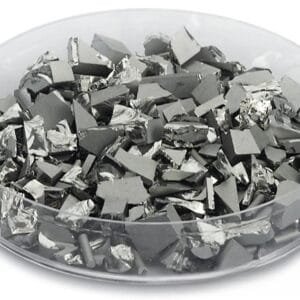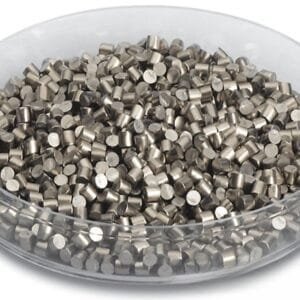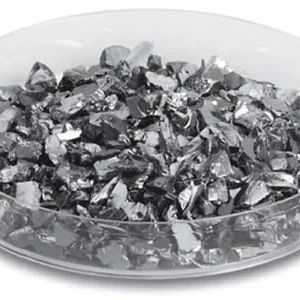Titanium Monoxide Evaporation Materials Overview
TFM offers high-quality titanium monoxide (TiO) evaporation materials, which are essential in various deposition processes. With a chemical formula of TiO, these high-purity materials play a critical role in ensuring optimal film deposition. TFM specializes in producing titanium monoxide evaporation materials with up to 99.9995% purity, adhering to rigorous quality control measures to ensure the reliability of the final product.
Related Products:
Titanium Evaporation Materials
Titanium Monoxide Evaporation Materials Specifications
| Material Type | Titanium Monoxide |
| Symbol | TiO |
| Appearance/Color | Dark, Crystalline Solid |
| Melting Point | 1,750 °C (3,180 °F; 2,020 K) |
| Density | 4.95 g/cm3 |
| Purity | 99.9% |
| Shape | Powder/ Granule/ Custom-made |
Applications of Titanium Monoxide Evaporation Materials
Titanium monoxide evaporation materials are utilized in a variety of cutting-edge applications, including:
- Deposition Processes: Commonly used in semiconductor deposition, chemical vapor deposition (CVD), and physical vapor deposition (PVD).
- Optics & Coatings: Applied in wear protection, decorative coatings, and display technologies.
Packaging and Quality Control
TFM ensures that all titanium monoxide evaporation materials are carefully packaged and clearly labeled for easy identification and quality control. Stringent measures are taken during storage and transportation to prevent damage, preserving the integrity of the product until it reaches the customer.
Contact and Customization
TFM is a leading provider of high-purity titanium monoxide evaporation materials in various forms, including tablets, granules, rods, and wires. Custom shapes and quantities are available upon request. In addition to evaporation materials, TFM supplies evaporation sources, boats, filaments, crucibles, heaters, and e-beam crucible liners. For pricing inquiries or further information on other materials, feel free to reach out to TFM for a quote.


 MSDS File
MSDS File



Reviews
There are no reviews yet.